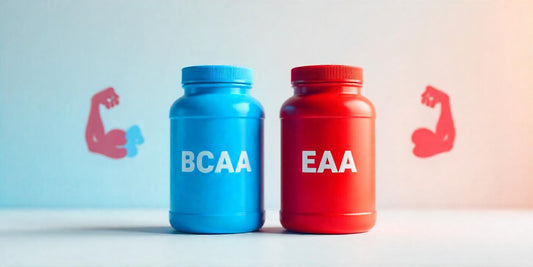

Increase Muscle Mass by Lowering Estrogen
Table of Contents
Estrogen Pollution is Killing Your Muscle Gains
The Estrogen and Muscle Mass Connection
Despite what many men think, men do need estrogen, but only in relatively small amounts, more men have issues with controlling excess estrogen levels than not having enough. In a 2010 study in the Journal of Clinical Endocrinology and Metabolism, researchers concluded that over the past 20 years, there has been “substantial age-independent decreases in male serum T concentrations”. This means that testosterone is decreasing across the board for men, regardless of age. So why the decrease in testosterone over the past 20 years? Researchers suspect that the increases in environmental estrogens, or xenoestrogens, to be a factor. These are environmental compounds introduced into the environment by industrial, agricultural and chemical companies that mimic the actions of estrogen. These are synthetic forms of the female hormone estrogen but, unlike natural estrogen, these chemical-based “mutant estrogens” are very difficult for your body to dispose of. Instead, they’re trapped away in your fat cells and disrupt the natural balance of male hormones.
Estrogen Increases with Age
It’s almost inevitable to control estrogen as a man ages and testosterone levels start declining. Increased adipose fat is one of the main reasons men start to make more estrogen, as adipose tissue is a major source of estrogen production in men. The higher levels of body fat, the greater the effects of aromatase (the changing of testosterone into estrogen). As mentioned, when testosterone decreases, estrogen increases.
Estrogen is needed in the male body, but having too much estrogen can cause the following issues:
- Gynecomastia or excess fat tissue on the nipples;
- Erectile dysfunction;
- Loss of body hair;
- Loss of muscle mass;
- Decreases in bone mass;
- Increases in body fat;
- And half a dozen different types of cancer.
Big Arms, but Big Prostate
Prostate cancer is the second leading cause of cancer-related mortality in American men, followed behind heart disease. Interestingly, the incidence of prostate cancer in Japanese and Chinese men is remarkably low compared with the incidence in American males.
So what are Chinese and Japanese men doing differently to prevent prostate cancer? One possible contributor to the lower prostate cancer rates in Asian men is the higher consumption of phytochemical-rich vegetables that is typical of this population. Consumption of cruciferous vegetables, including broccoli, brussels sprouts, kale, and cauliflower, has been associated with a decreased risk of various human cancers.
DIM and I3C Reduce Cancer Risks in Men
A major active compound in cruciferous vegetables, mainly from cabbage and radishes, indole-3-carbinol (I3C), along with its primary digestive derivative, 3,3′-diindolylmethane (DIM), exhibit promising cancer-protective properties. One study found that DIM suppresses DHT (two conditions are related to higher levels of DHT: Male pattern baldness and Benign prostatic hyperplasia (BPH) – increase in the size of the prostate) and Prostate Specific Androgen (PSA) expression and exhibits no androgen receptor agonist activity. The down-regulation of PSA by DIM is important because of the association of increased PSA expression associated with prostate cancer. Another interesting compound found in plants that can reduce cancer risks is Indole-3-carbinol (I3C).
Indole-3-carbinol (I3C) is a phyto-compound from cruciferous vegetables such as cabbage and brussels sprouts. It has also been proven effective against several types of cancer, along with DIM, including colon cancer.
Indole-3-carbinol (I3C) Reduces Estrogen
I3C displays other important properties that may be beneficial in cancer prevention. It is a relatively effective antioxidant, acts as an anti-estrogen, and may decrease tumor growth. Previous studies have reported that estrogen levels are much lower in men who are vegetarians compared to men who are meat eaters. In light of the inverse association between vegetable consumption and cancer risk, including risk of breast cancer, it is possible that the protective effect of a diet high in vegetables is due in part to intake of dietary indoles.
Most men don’t eat the right amount of vegetables in their diet, which can contribute to increased estrogen levels. One study found that estrogen profiles were significantly decreased by the dietary supplement I3C. Researchers found that when the subject consumed the supplement I3C, increased estrogen excretion occurred, leading to decreased activity in competing pathways. Interestingly, a metabolic shift similar to that found when subject consumed I3C that was also similar to vegetarians on a macrobiotic diet. I3C consumption lowered most other measured estrogens, including estradiol and estrone, supporting the conclusion that overall estrogenic exposure was decreased with the consumption of I3C.
Because the aromatase enzyme catalyzes the conversion of testosterone to estradiol (E2), the activity of this enzyme could be important in the musculoskeletal health of men with low testosterone.
High Estrogen Kills Your Gains
Excess estrogen levels not only increase fat mass, but they also decrease lean muscle mass. For example, one study measured the influence of aromatase activity (i.e. enzyme that converts testosterone to estrogen) on body composition of patients with low testosterone. The baseline data of 90 patients between 40 and 74 years old that participated in a genetic study of response to testosterone therapy in men with low testosterone (i.e., <300 ng/dl) were analyzed. At the end of the study, the men in the highest levels of estrogen to testosterone ratio (E2: T) had the highest abdominal fat, and lowest lean leg body mass. A similar pattern was observed in the upper extremities; that is, fat mass significantly increased, whereas lean mass significantly decreased with increasing estrogen to testosterone ratios. The present findings suggest that in men with low testosterone, aromatase activity could be an important determinant of musculoskeletal health. Men with high aromatase activity have lower lean and higher truncal fat mass as compared to those with lower aromatase activity.
According to the Journal of Medicinal Food, estrogen-blocking foods that contain phytochemicals DIM and I3C can help reduce estrogen levels in the bloodstream. Elevated estrogen not only diminishes men’s testosterone levels, but it can also put men at risk for both heart disease and certain types of cancer.
| Wingo, P. A., Landis, S., and Ries, L. A. (1997) CA-Cancer J. Clin. 47, 239-242 |
Shimizu, H., Ross, R. K., Bernstein, L., Yatani, R., Henderson, B. E., and Mack, T. M. (1991) Br. J. Cancer 63, 963-966
Haenszel, W., and Kurihara, M. (1968) J. Natl. Cancer Inst. 40, 43-68
Kolonel, L. N., Hankin, J. H., Whittemore, A. S., Wu, A. H., Gallagher, R. P., Wilkens, L. R., John, E. M., Howe, G. R., Dreon, D. M., West, D. W., and Paffenbarger, R. S., Jr. (2000) Cancer Epidemiol. Biomark. Prev. 9, 795-804
Terry, P., Wolk, A., Persson, I., and Magnusson, C. (2001) J. Am. Med. Assoc. 285, 2975-2977
Le HT, Schaldach CM, Firestone GL, Bjeldanes LF. Plant-derived 3,3′-Diindolylmethane is a strong androgen antagonist in human prostate cancer cells. J Biol Chem. 2003 Jun 6;278(23):21136-45.
Gao X, Petroff BK, Oluola O, Georg G, Terranova PF, Rozman KK. Endocrine disruption by indole-3-carbinol and tamoxifen: blockage of ovulation. Toxicol Appl Pharmacol. 2002 Sep 15;183(3):179-88.
Michnovicz JJ, Adlercreutz H, Bradlow HL. Changes in levels of urinary estrogen metabolites after oral indole-3-carbinol treatment in humans. J Natl Cancer Inst. 1997 May 21;89(10):718-23.
Adlercreutz H, Gorbach SL, Goldin BR, Woods MN, Dwyer JT, Hockerstedt K, et al. Diet and urinary estrogen profiles in various populations. A preliminary report. Polycyclic Aromatic Compounds 1994;6:261-73.
Bradlow HL, Telang NT, Sepkovic DW, Osborne MP. 2-hydroxyestrone: the ‘good’ estrogen. J Endocrinol. 1996 Sep;150 Suppl:S259-65. Review. Zeligs, M. A. (1998). Diet and estrogen status: the cruciferous connection. Journal of Medicinal Food, 1(2), 67-82.

















